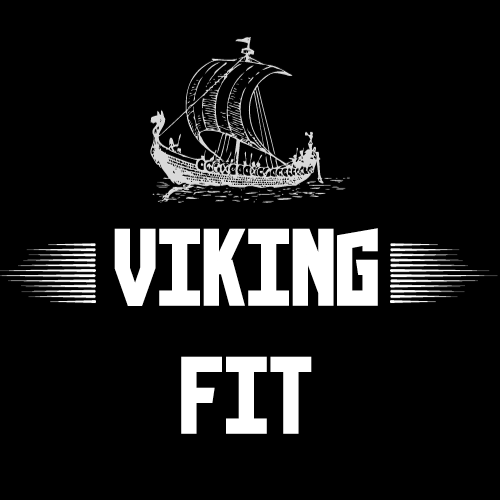Discover effective methods on how to speed up muscle strain recovery. Learn proven strategies, immediate actions, and long-term tips to heal quickly and get back to your routine.
Muscle strains are a common injury that can sideline even the most dedicated athletes and fitness enthusiasts. Whether you’re dealing with a mild pull or a more severe tear, the key to a quick and effective recovery lies in understanding the right strategies and treatments. In this guide, we’ll explore the best methods on how to speed up muscle strain recovery, ensuring you get back to your routine as swiftly and safely as possible.
Table of Contents
Understanding Muscle Strains
Before diving into recovery techniques, it’s important to understand what a muscle strain is. A muscle strain occurs when muscle fibers are overstretched or torn, usually due to overuse, fatigue, or improper use. Symptoms can range from mild discomfort and stiffness to severe pain and muscle weakness. Muscle strains are categorized into three grades:
- Grade I (Mild): Only a few muscle fibers are damaged. Symptoms include mild pain and stiffness but with minimal loss of strength or movement.
- Grade II (Moderate): More extensive damage to muscle fibers, resulting in more significant pain, swelling, and some loss of muscle strength and function.
- Grade III (Severe): A complete rupture of the muscle, causing severe pain, swelling, bruising, and a significant loss of muscle function.
Understanding the severity of your strain is crucial for determining the appropriate recovery strategy. Always consult with a healthcare professional for an accurate diagnosis and treatment plan.
Immediate Actions: R.I.C.E Method
When you first experience a muscle strain, the R.I.C.E method is your best friend. This tried-and-true approach can significantly reduce inflammation and pain in the initial stages of injury.
- Rest: Avoid using the affected muscle as much as possible to prevent further injury. Resting allows the muscle fibers to heal and reduces the risk of exacerbating the injury. This doesn’t mean complete inactivity, but you should avoid activities that stress the injured muscle.
- Ice: Apply ice to the strained area for 20 minutes every hour for the first 48 hours. Ice helps reduce swelling and numb the pain by constricting blood vessels and decreasing blood flow to the area. Use a cloth or towel between the ice and your skin to prevent frostbite.
- Compression: Use an elastic bandage to compress the area, which helps reduce swelling. Be careful not to wrap it too tightly, as this can cut off circulation. Compression can also provide some support to the injured muscle.
- Elevation: Keep the injured muscle raised above heart level to minimize swelling. Elevation helps reduce blood flow to the area, decreasing inflammation and swelling.
Effective Treatments how to Speed Up Muscle Strain Recovery
- Heat Therapy After the initial 48 hours of using ice, switch to heat therapy. Applying a warm compress or heating pad can increase blood flow to the affected area, promoting healing. Heat therapy can also help relax muscles, reduce stiffness, and alleviate pain. Here are some heat therapy options:
- Warm Compress: Use a warm, damp cloth or towel.
- Heating Pad: Electric heating pads provide consistent heat.
- Warm Baths: Soaking in a warm bath can relax muscles and improve circulation.
- Massage Therapy Gentle massage can help relax tense muscles, reduce pain, and improve circulation. Consider visiting a professional massage therapist who specializes in sports injuries. Massage can help break down scar tissue, improve flexibility, and enhance blood flow to the injured area. Types of massage therapy include:
- Swedish Massage: Gentle and relaxing, good for mild strains.
- Deep Tissue Massage: Targets deeper muscle layers, suitable for more severe strains.
- Sports Massage: Focuses on areas of the body that are overused and stressed from repetitive movements.

- Stretching and Strengthening Exercises As your pain decreases, incorporate gentle stretching and strengthening exercises. These should be tailored to your specific injury and guided by a physical therapist to avoid further damage. Stretching helps maintain flexibility and prevents scar tissue from forming improperly. Strengthening exercises help rebuild muscle strength and prevent future strains. Examples include:
- Static Stretching: Hold stretches for 20-30 seconds to improve flexibility.
- Dynamic Stretching: Gentle, controlled movements to increase range of motion.
- Resistance Training: Use resistance bands or light weights to strengthen muscles.
- Proper Nutrition Eating a balanced diet rich in proteins, vitamins, and minerals supports muscle repair and growth. Incorporate foods high in antioxidants, like fruits and vegetables, to reduce inflammation. Key nutrients for muscle recovery include:
- Protein: Essential for muscle repair and growth. Sources include lean meats, fish, eggs, dairy, beans, and nuts.
- Vitamin C: Promotes collagen production, important for tissue repair. Found in citrus fruits, berries, and vegetables.
- Vitamin E: Antioxidant that helps reduce inflammation. Found in nuts, seeds, and green leafy vegetables.
- Omega-3 Fatty Acids: Reduce inflammation and promote healing. Found in fatty fish, flaxseeds, and walnuts.
- Hydration Staying hydrated is crucial for muscle recovery. Water helps flush out toxins and ensures that your muscles receive the necessary nutrients for repair. Dehydration can impair muscle function and slow down the healing process. Aim for at least 8-10 glasses of water per day, and increase your intake if you’re active or in a hot environment.

- Over-the-Counter Pain RelieversNonsteroidal anti-inflammatory drugs (NSAIDs) like ibuprofen can help manage pain and reduce inflammation. However, use them as directed and consult with a healthcare professional if needed. Prolonged use of NSAIDs can have side effects, so it’s important to use them only when necessary and as part of a broader recovery strategy.
- Physical TherapyA physical therapist can provide targeted treatments and exercises to enhance recovery. They can also use techniques like ultrasound and electrical stimulation to speed up the healing process. Physical therapy can help restore muscle function, improve range of motion, and prevent future injuries. Some common physical therapy techniques include:
- Ultrasound Therapy: Uses sound waves to promote tissue healing.
- Electrical Stimulation: Stimulates muscle contractions to reduce pain and improve strength.
- Manual Therapy: Hands-on techniques to improve muscle function and flexibility.
- Adequate SleepQuality sleep is essential for muscle recovery. Aim for 7-9 hours of sleep per night to allow your body to repair and rebuild muscle tissues effectively. During sleep, the body produces growth hormone, which plays a critical role in muscle repair and regeneration. Establish a regular sleep schedule, create a comfortable sleep environment, and practice good sleep hygiene to ensure restful sleep
Alternative Therapies for Muscle Strain Recovery
In addition to the traditional methods mentioned above, there are several alternative therapies that can aid in muscle strain recovery. While not all of these methods have extensive scientific backing, many individuals find them beneficial. Always consult with a healthcare professional before trying alternative therapies.
- Acupuncture Acupuncture involves inserting thin needles into specific points on the body to stimulate healing and reduce pain. It is believed to improve blood flow, reduce inflammation, and promote the release of endorphins. Some studies suggest that acupuncture can be effective for pain relief and muscle recovery.
- Chiropractic Care Chiropractors use spinal adjustments and other techniques to improve joint function and alleviate pain. For muscle strains, chiropractic care can help address any misalignments or imbalances that may be contributing to the injury. It can also improve overall body mechanics and reduce the risk of future strains.
- Herbal Remedies Some herbal remedies have anti-inflammatory and pain-relieving properties that can aid in muscle strain recovery. Common herbs used for muscle recovery include:
- Arnica: Available in creams and gels, arnica is used to reduce pain and inflammation.
- Turmeric: Contains curcumin, which has anti-inflammatory properties. Can be taken as a supplement or added to food.
- Ginger: Has anti-inflammatory and analgesic effects. Can be consumed as tea or in supplement form.
- Cryotherapy Cryotherapy involves exposing the body to extremely cold temperatures for a short period. This can help reduce inflammation, relieve pain, and promote healing. Whole-body cryotherapy is available at specialized centers, but localized cryotherapy (using ice packs or cold sprays) can also be effective.
- Compression Garments Wearing compression garments, such as compression sleeves or socks, can help improve circulation, reduce swelling, and support muscle recovery. These garments apply gentle pressure to the affected area, which can enhance blood flow and reduce muscle soreness.
Long-Term Strategies to Prevent Muscle Strains
Preventing muscle strains in the future is just as important as treating them. Here are some tips to keep your muscles healthy and strong:
- Warm-Up Properly Always start with a warm-up before engaging in physical activities. A proper warm-up increases blood flow to your muscles, raises your body temperature, and prepares your muscles for activity. Include dynamic stretches and light aerobic exercises to get your muscles ready for action.
- Gradual Progression Increase the intensity and duration of your workouts gradually to avoid overloading your muscles. Follow a structured training program that allows for gradual progression and incorporates rest days to prevent overuse injuries. Avoid sudden increases in activity levels, especially if you are new to exercise or returning after a break.
- Stay Flexible Incorporate regular stretching into your routine to maintain muscle flexibility. Stretching helps improve range of motion, reduce muscle stiffness, and prevent injuries. Include both static and dynamic stretches in your routine, and consider activities like yoga or Pilates to enhance overall flexibility and muscle balance.
- Use Proper Technique Ensure you are using the correct form and technique during exercises to prevent unnecessary strain. Poor technique can place undue stress on your muscles and increase the risk of injury. Consider working with a coach or trainer to learn proper form and technique, especially for complex movements or new exercises.
- Strength Training Engage in regular strength training to build muscle strength and endurance. Strong muscles are less prone to strains and injuries. Focus on all major muscle groups and include exercises that mimic the movements of your sport or activity. Use a combination of free weights, resistance bands, and bodyweight exercises to achieve balanced strength.

- Stay Active Maintain an active lifestyle to keep your muscles in good condition. Regular physical activity helps improve muscle tone, flexibility, and overall health. Aim for a mix of aerobic, strength, and flexibility exercises to achieve well-rounded fitness.
- Listen to Your Body Pay attention to your body’s signals and avoid pushing through pain. If you experience discomfort or pain during exercise, stop and assess the situation. Continuing to exercise through pain can worsen injuries and prolong recovery time. Take rest days and allow your body to recover when needed.
- Proper Footwear Wear appropriate footwear for your activities. Proper shoes provide support, cushioning, and stability, reducing the risk of muscle strains. Replace worn-out shoes regularly to maintain adequate support and protection.
- Cross-Training Incorporate cross-training into your fitness routine to avoid overuse injuries. Cross-training involves participating in different types of activities to work various muscle groups and reduce repetitive strain. For example, if you are a runner, consider swimming or cycling as alternative forms of exercise. The Power of Suicide Exercises : Unlock Mental Health
- Stay Hydrated Proper hydration is essential for muscle function and recovery. Dehydration can impair muscle performance and increase the risk of strains. Drink water before, during, and after exercise to stay hydrated, and consider electrolyte-replenishing drinks if you engage in prolonged or intense activities.
Case Studies: Successful Muscle Strain Recovery
To provide real-world insights into how to speed up muscle strain recovery, let’s look at a few case studies of individuals who successfully recovered from muscle strains using a combination of the strategies mentioned above.
Case Study 1: Sarah’s Recovery from a Grade II Hamstring Strain
Background: Sarah, a 28-year-old avid runner, experienced a Grade II hamstring strain during a sprint workout. She felt a sharp pain in the back of her thigh and immediately stopped running.
Immediate Actions:
- Rested and avoided any activities that stressed the hamstring.
- Applied ice packs to the injured area for 20 minutes every hour for the first 48 hours.
- Used an elastic bandage to compress the hamstring and reduce swelling.
- Elevated her leg whenever possible.
Recovery Strategy:
- After the initial 48 hours, switched to heat therapy using a warm compress to improve blood flow.
- Began gentle stretching exercises under the guidance of a physical therapist, focusing on hamstring flexibility.
- Incorporated strengthening exercises like hamstring curls and bridges to rebuild muscle strength.
- Maintained a protein-rich diet and stayed hydrated to support muscle repair.
- Attended regular physical therapy sessions, including ultrasound therapy and manual therapy techniques.
Outcome:
- Sarah gradually regained strength and flexibility in her hamstring.
- She returned to running after 8 weeks of focused recovery and rehabilitation.
- Continued to incorporate proper warm-up routines and cross-training to prevent future injuries.
Case Study 2: Mark’s Recovery from a Grade III Calf Strain
Background: Mark, a 35-year-old basketball player, suffered a Grade III calf strain during a game. He felt a severe pain and heard a popping sound in his calf.
Immediate Actions:
- Rested completely and used crutches to avoid putting weight on the injured leg.
- Applied ice packs to the calf for 20 minutes every hour for the first 48 hours.
- Used a compression bandage and kept the leg elevated.
Recovery Strategy:
- After the initial 48 hours, began using a heating pad to improve blood flow and reduce muscle stiffness.
- Consulted with a sports medicine specialist and underwent an MRI to assess the extent of the injury.
- Followed a structured physical therapy program that included:
- Gentle stretching exercises to improve calf flexibility.
- Progressive strengthening exercises, starting with isometric holds and advancing to calf raises.
- Balance and proprioception exercises to improve stability and prevent future strains.
- Maintained a balanced diet rich in vitamins and minerals to support healing.
- Used over-the-counter pain relievers as needed to manage pain and inflammation.
Outcome:
- Mark experienced significant improvement in calf strength and function after 12 weeks of rehabilitation.
- Returned to basketball activities with a focus on proper warm-up, stretching, and strength training.
- Continued regular physical therapy sessions to monitor progress and prevent re-injury.
Conclusion
Understanding how to speed up muscle strain recovery involves a combination of immediate care, effective treatments, and preventive measures. By following these strategies, you can minimize downtime and return to your activities stronger and more resilient. Remember, if you experience severe pain or suspect a significant injury, consult a healthcare professional for personalized advice and treatment.
By adhering to these guidelines and prioritizing your muscle health, you’ll be well-equipped to handle and recover from muscle strains efficiently. Stay proactive and attentive to your body’s needs, and you’ll be back to your best in no time.



